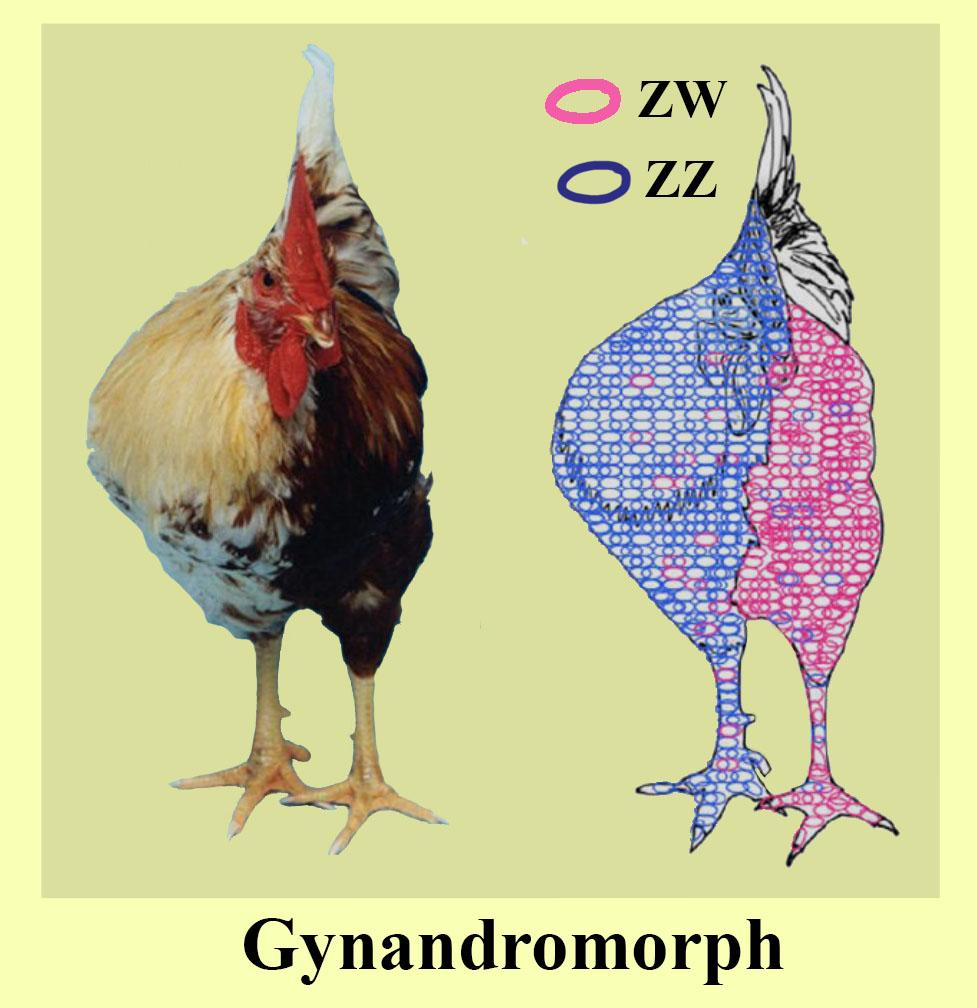
Answer
452.4k+ views
Hint: An insect or crustacean which has physical attributes of both gender, generally showing a bilateral contrast. In such an insect anterior region of the animal, the body has the characteristics of one sex and the posterior half region has the characteristics of the other sex.
Complete answer:
Gynandromorphs ("gyne" from Greek significance female, "andro" for male, and "morph" which means variety) are singular animals that have both genetically male and female tissues and frequently have detectable male and female attributes. They might be bilateral, seeming to split into halves into male and female sides, or they might be mosaic, with patches characteristics for one sex showing up in a body part characteristic for the other sex. Gynandromorphs present in insects, crustaceans, spiders, and different arthropods just as in winged animals, however, they are very uncommon, and finding one in the field or in the research facility is a significant occasion.
Additional Information: The overwhelming theory of how gynandromorphs happen in flying creatures is that an error happens in the development of an egg. The egg regularly conveys one sex chromosome to join with the single-sex chromosome conveyed by the sperm, however in the event that an egg inadvertently winds up with two chromosomes—a Z and a W—and if this aberrant egg is treated by two Z-conveying sperm, the bird that outcomes will have some ZZ cells and some ZW cells and it might have both male and female physical attributes.
So the right answer is 'Half male and half female'.
Note: Gynandromorphy in crustaceans is caused by the loss or damage of sex chromosomes during early cell division of the zygote, but sex hormones have an influence on the development of sex-related characteristics. Sex determination is known to be affected by bacterial and viral infections, temperature variation, and photoperiod cues in crustaceans and may play a part in the occurrence of gynandromorphs.

Complete answer:
Gynandromorphs ("gyne" from Greek significance female, "andro" for male, and "morph" which means variety) are singular animals that have both genetically male and female tissues and frequently have detectable male and female attributes. They might be bilateral, seeming to split into halves into male and female sides, or they might be mosaic, with patches characteristics for one sex showing up in a body part characteristic for the other sex. Gynandromorphs present in insects, crustaceans, spiders, and different arthropods just as in winged animals, however, they are very uncommon, and finding one in the field or in the research facility is a significant occasion.
Additional Information: The overwhelming theory of how gynandromorphs happen in flying creatures is that an error happens in the development of an egg. The egg regularly conveys one sex chromosome to join with the single-sex chromosome conveyed by the sperm, however in the event that an egg inadvertently winds up with two chromosomes—a Z and a W—and if this aberrant egg is treated by two Z-conveying sperm, the bird that outcomes will have some ZZ cells and some ZW cells and it might have both male and female physical attributes.
So the right answer is 'Half male and half female'.
Note: Gynandromorphy in crustaceans is caused by the loss or damage of sex chromosomes during early cell division of the zygote, but sex hormones have an influence on the development of sex-related characteristics. Sex determination is known to be affected by bacterial and viral infections, temperature variation, and photoperiod cues in crustaceans and may play a part in the occurrence of gynandromorphs.

Recently Updated Pages
How is abiogenesis theory disproved experimentally class 12 biology CBSE

What is Biological Magnification

Which of the following reagents cannot distinguish class 12 chemistry CBSE

Which of the following reagents cannot distinguish class 12 chemistry CBSE

Which of the following reagents cannot distinguish class 12 chemistry CBSE

Which of the following reagents cannot distinguish class 12 chemistry CBSE

Trending doubts
Which are the Top 10 Largest Countries of the World?

What is the definite integral of zero a constant b class 12 maths CBSE

Differentiate between homogeneous and heterogeneous class 12 chemistry CBSE

What are the major means of transport Explain each class 12 social science CBSE

Explain sex determination in humans with the help of class 12 biology CBSE

How much time does it take to bleed after eating p class 12 biology CBSE




